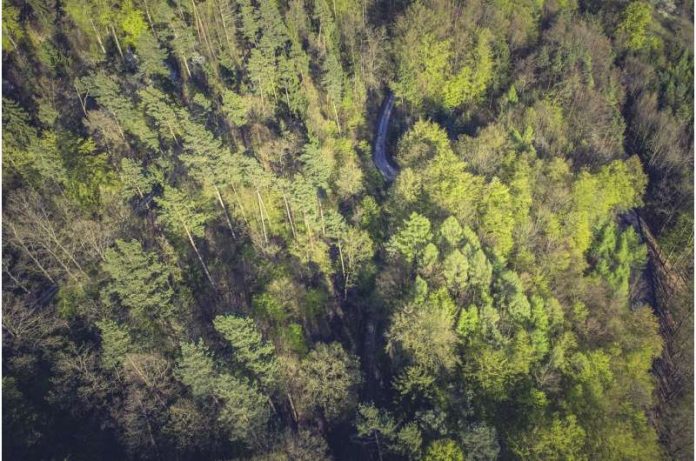Credit: Pixabay/CC0 Public Domain
The pixel size of satellite images has become finer over the past decade with the development of space-based cameras. What is in store for Earth observations when the 10cm satellite imagery becomes available in the near future? Forest remote sensing researchers believe it could open a new era for tree height detection.
Scientists at the Aerospace Information Research Institute (AIR) of the Chinese Academy of Sciences (CAS) have proposed a new algorithm called AGAR that makes it possible to determine tree heights using only stereoscopic images of 10 cm, according to a study published in Remote Sensing of Environment on April 10 .May.
Tree heights are important structural parameters that reflect forest productivity and health, and they play a key role in assessing forest ecological services and functions in terms of biodiversity and forest carbon stocks.
Heights derived from stereoscopic images are a mixture of ground surface and forest stand heights. No new methods were identified to overcome the challenge of measuring topography under dense vegetation cover, although deciduous forests could be described by stereoscopic images of leaves and sparse forests by changes in solar elevation angle. Due to forest canopy occlusion and the limited penetrating ability of passive optical images, it is currently not possible to separate terrain heights and forest heights using stereoscopic images alone.
Current stereoscopic images are obtained based on the analysis of satellite images with spatial resolutions of 15 meters to 2 meters. At this spatial resolution, changes in soil surface heights are on the same scale as forest stand heights. From this point of view it is indeed difficult to separate them.
Scientists found that 10-cm stereoscopic images allowed the mixture to be separated at the level of trees rather than forest stands, using image segmentation and allometric equations. Validation results using stereoscopic UAV imagery under various terrain conditions showed that the AGAR algorithm can effectively separate terrain from forest heights and is able to provide more reasonable predictions of tree heights with minimal terrain influence.
“This study could contribute to space-based stereoscopic images of vertical forest structures in the future,” said Prof. Ni Wenjian, corresponding author of the study.
More information:
Tianyu Yu et al., Extraction of tree heights in mountainous natural forests from stereoscopic UAV leaf images based on approaching ground surfaces, Remote Sensing of Environment (2023). DOI: 10.1016/j.rse.2023.113613
Provided by the Chinese Academy of Sciences
Citation: New Advance in Detecting Tree Heights Using Satellite Imagery (2023 May 22), retrieved May 22, 2023 from https://phys.org/news/2023-05-advance-tree-heights-satellite-imagery.html
This document is subject to copyright. Except for fair trade for the purpose of private study or research, no part may be reproduced without written permission. The content is for informational purposes only.
phys.org
https://phys.org/news/2023-05-advance-tree-heights-satellite-imagery.html













